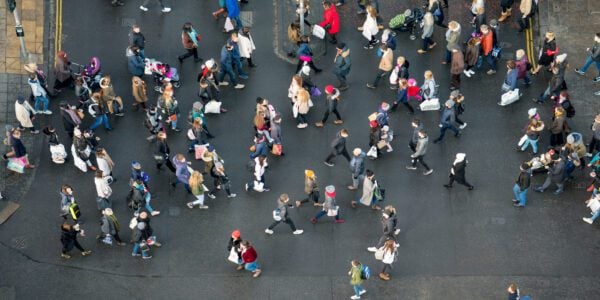Only 10% of people will return to living exactly as they did before COVID-19 after the pandemic ends, find UCL researchers as part of the Nuffield-funded COVID-19 social study.
While just over half (51%) of people felt they were more likely on balance to return to how things were before lockdown, a fifth (22%) felt they were more likely to change things and this rose to around a quarter in those aged 30-59 (25%) and for those with a diagnosed mental illness (26%).
The factor that people were most likely to change was increasing their support for local businesses (40%), with around a third of people also saying they would save more money (33%), exercise more (35%) or make more use of online shopping (33%). A quarter of adults expressed a plan to work from home more (this increased to nearer a third (29%) when excluding those over the age of 60).
Launched in the week before lockdown started, the ongoing UCL COVID-19 Social Study is funded by the Nuffield Foundation with additional support from Wellcome and UK Research and Innovation (UKRI). It is the UK’s largest study into how adults are feeling about the lockdown, government advice and overall wellbeing and mental health with over 70,000 participants who have been followed across the last 23 weeks.
A quarter (26%) of people across all age groups also reported wanting to spend more time with family outside of their homes, or holiday more in the UK. Just under a fifth (18%) of people aged 18-29 also expressed a desire to find a new romantic relationship once the pandemic is over.
Lead author, Dr Daisy Fancourt (UCL Epidemiology & Health Care) said: “Our study shows that during lockdown many peoples’ priorities have changed, with the vast majority of people expressing a desire to change parts of their life and routine once the pandemic is over.
“This is likely down to the upheaval of lockdown breaking many habits and leading to people reassessing what they feel is important or worthwhile, be that spending time with their family, supporting their community, or saving money, to name some of the more popular responses.”
Groups least likely to report that they would make changes to their lives were those who lived alone, those on lower household incomes, and those without children. Those aged 60+ were most likely to say they would return to living exactly as they had before, with 16% saying they would, versus just 7% of the population under 60.
While many respondents say they would make lifestyle changes after the pandemic, this is less likely to be the case amongst people from lower income households. This prompts important questions about whether lifestyle changes feel less feasible for people with lower household incomes who are, for example, more likely to be in precarious employment and have less disposable income. To be effective, policies should be targeted, and designed in consultation with at risk groups, to ensure they do not exacerbate existing health and social inequalities.”Cheryl Lloyd, Education Programme Head at the Nuffield Foundation























































